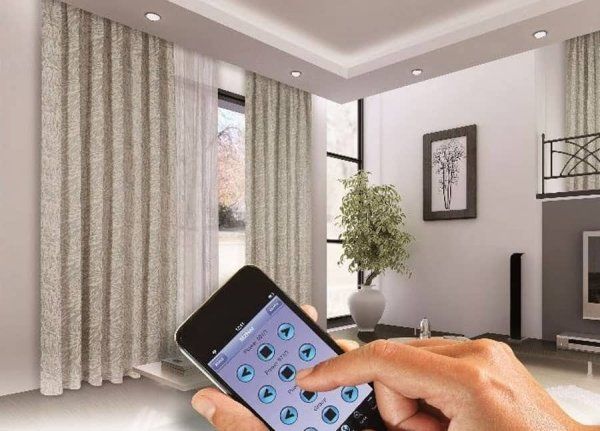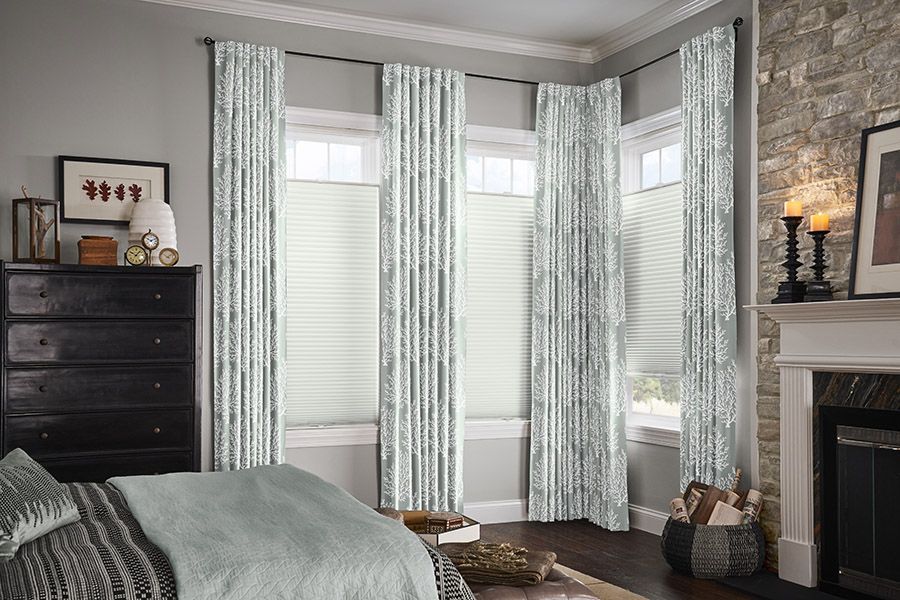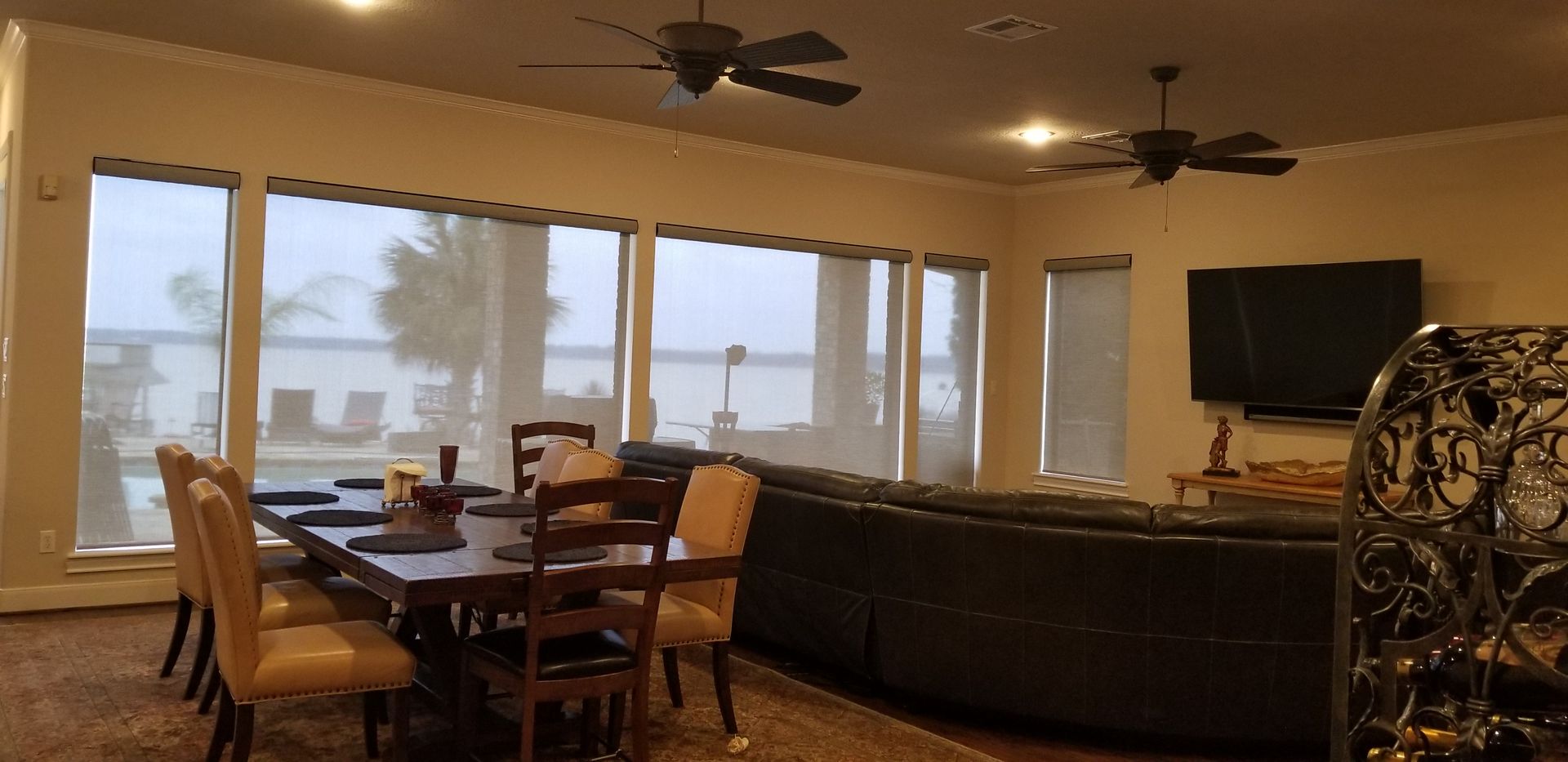Blinds vs Curtains
Blinds vs Curtains: Which is Better for Your Home?
Choosing between blinds and curtains can be a daunting task for homeowners and interior design enthusiasts striving for the perfect balance between functionality and aesthetics. Both options offer unique benefits, whether you're looking to enhance privacy, control light, or reduce energy costs. This guide will help you compare these popular window treatments, covering aesthetics, ease of use, light control, insulation, durability, cost, and maintenance. Ultimately, you'll find the information you need to make an informed decision aligned with sustainable living practices.
Blinds
Aesthetics
Blinds offer a sleek, modern appearance, ideal for contemporary homes. Available in various colors and materials, blinds can blend with existing decor or make a bold statement. Their clean lines provide an uncluttered look, perfect for minimalist designs. Blinds are also highly customizable, allowing homeowners to adjust color, material, and finish to suit different styles, from rustic kitchens to chic urban lofts.
Ease of Use
Blinds are convenient, featuring simple mechanisms that make opening and closing easy. Many include cords or wands, and motorized options add convenience with remote or voice control, especially useful for large or hard-to-reach windows. Child-safe cordless designs are also available, eliminating dangling cords and reducing risks for families with young children or pets.
Light & Privacy Control
Blinds excel in light and privacy control. By tilting the slats, you can easily regulate sunlight and maintain privacy, a benefit for spaces like bedrooms or living rooms. Blinds also offer various opacity levels, from sheer to blackout, to suit different lighting needs and enhance ambiance.
Insulation
Blinds can contribute to energy efficiency by adding insulation to windows, helping retain heat in winter and reflect sunlight in summer. Cellular or honeycomb blinds are particularly effective, trapping air within cells to maintain stable indoor temperatures, which is beneficial for extreme climates.
Durability
Blinds are known for durability and longevity, often outlasting other treatments. Made from materials like wood, aluminum, and PVC, they resist wear and tear, making them ideal for high-traffic areas or homes with children and pets. Regular maintenance helps keep them in top condition, extending their lifespan and functionality.
Cost
Blinds offer a range of price points to suit various budgets, with basic options like vinyl or aluminum being affordable and premium wood or motorized blinds available for those seeking luxury. Many find the longevity and energy-saving benefits of blinds justify the initial cost.
Installation
Blinds are straightforward to install, often achievable with basic tools. For those preferring professional assistance, many retailers offer installation services. This convenience makes blinds popular for quick, hassle-free room updates.
Maintenance
Blinds require regular cleaning to remove dust and debris, preserving their appearance and functionality. Metal or faux wood blinds can be wiped with a damp cloth for deeper cleaning, while periodic inspections help maintain smooth operation by addressing any minor issues early on.
Curtains
Aesthetics
Curtains provide a classic, versatile aesthetic that adds warmth and elegance to any room. Available in a wide range of colors, patterns, and textures, they can complement any interior style. Their flowing fabric can create a cozy, inviting ambiance and serve as a focal point in a room.
Ease of Use
Curtains are user-friendly, with rod pockets, grommets, or hooks allowing easy sliding along the rod. Motorized systems are also available for added convenience, especially for large or hard-to-reach windows, enabling effortless adjustments to light and privacy.
Light & Privacy Control
Curtains provide versatile light and privacy control, from sheer to blackout fabrics. Sheer curtains offer soft light while blackout curtains block light entirely, ideal for bedrooms and media rooms. Layering with other treatments, such as blinds, can further enhance control and aesthetics.
Insulation
Curtains act as insulators, helping to regulate indoor temperatures by reducing heat loss in winter and blocking sunlight in summer. Thick fabrics, like velvet or thermal curtains, improve insulation, contributing to energy savings and reducing the need for heating or cooling.
Durability
Curtain durability depends on the fabric quality and care. High-quality materials like heavyweight cotton or silk resist fading and fraying over time, ensuring they continue to enhance your home for years. Proper care, such as washing or dry-cleaning, extends their lifespan.
Natural and Synthetic Materials
Curtains crafted from natural materials like cotton, linen, or silk offer a timeless aesthetic, adding depth to a room. Synthetic materials, such as polyester, provide durability and resist fading, shrinking, and wrinkling, making them a low-maintenance option for busy households.
Cost
Curtain costs vary widely based on material, size, and design. Basic synthetic options are affordable, while luxurious fabrics like silk or velvet are more expensive. When budgeting, consider additional costs for rods, hardware, and installation.
Installation
Curtain installation is generally simple, requiring basic tools. Professional services are also available for those wanting precise measurements and a polished finish.
Maintenance
Curtains require regular upkeep, such as washing or vacuuming, to maintain their appearance. Delicate fabrics may require professional cleaning. Promptly addressing stains and following care instructions ensures long-lasting beauty and functionality.
Environmental Impact
Blinds and curtains both offer sustainable options. Blinds made from bamboo or recycled aluminum and curtains crafted from organic cotton or linen reduce environmental impact. Selecting eco-friendly materials and processes can help lower your home's carbon footprint.
Best Rooms for Blinds vs Curtains
Blinds suit rooms requiring precise light and privacy control, like home offices or bathrooms. Curtains add warmth and are well-suited for cozy spaces like living rooms or bedrooms, providing aesthetic and functional benefits in each area.
GALLERY WINDOW FASHIONS
- Mon - Fri
- -
- Saturday
- Appointment Only
- Sunday
- Closed





